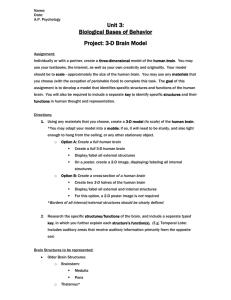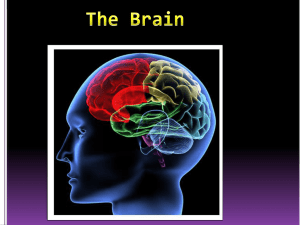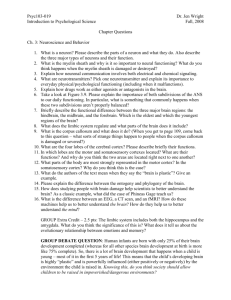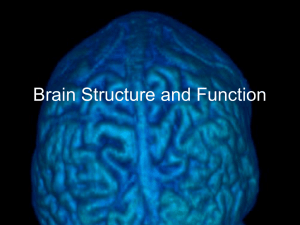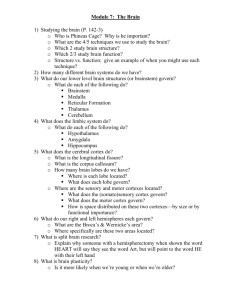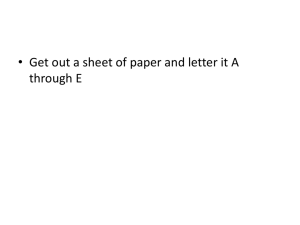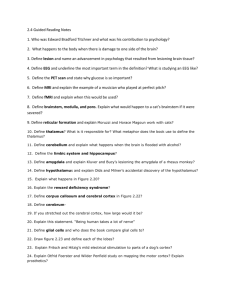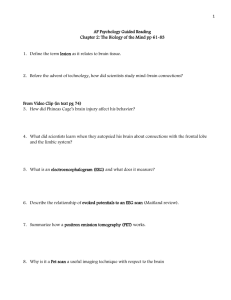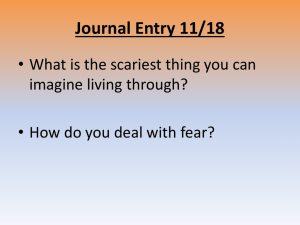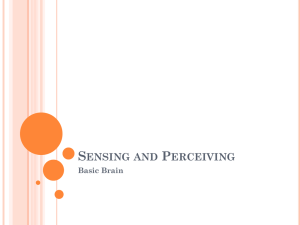Brain power point wilberforce
advertisement
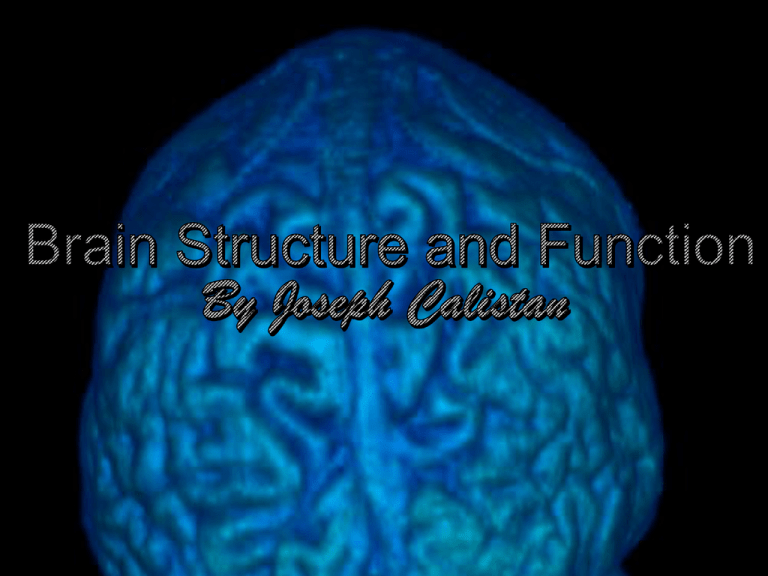
“If the human brain were so simple that we could understand it, we would be so simple that we couldn’t” -Emerson Pugh, The Biological Origin of Human Values (1977) Phineas Gage • September 13th, 1848 • Phineas 25 years old • Rutland & Burlington Railroad, Cavendish, VT • Paving the way for new RR tracks • “Tamping Iron” – 1.25in x 3ft Phineas Gage • Accident – Quick Recovery • Months later: “No longer Gage” – Before: capable, efficient, best foreman, well-balanced mind – After: extravagant, anti-social, liar, grossly profane • Stint with P.T Barnum (circus stuff) • Died 12 years later Evolution of the Brain Reptilian Paleomammalian Neomammalian The Brain • Brainstem –responsible for automatic survival functions • Medulla –controls heartbeat and breathing Parts of the Brain THALAMUS Relays messages amygdala hippocampus pituitary CEREBELLUM Coordination and balance BRAINSTEM Heart rate and breathing Reticular Formation •Widespread connections •Arousal of the brain as a whole •Reticular activating system (RAS) •Maintains consciousness and alertness •Functions in sleep and arousal from sleep The Cerebellum –helps coordinate voluntary movement and balance The Limbic System • Hypothalamus, pituitary, amygdala, and hippocampus all deal with basic drives, emotions, and memory • Hippocampus Memory processing • Amygdala Aggression (fight) and fear (flight) • Hypothalamus Hunger, thirst, body temperature, pleasure; regulates pituitary gland (hormones) The Limbic System Hypothalamus neural structure lying below (hypo) the thalamus; directs several maintenance activities eating drinking body temperature helps govern the endocrine system via the pituitary gland linked to emotion (show video) The Limbic System • Amygdala –two almondshaped neural clusters that are components of the limbic system and are linked to emotion and fear The Brain • Thalamus – the brain’s sensory switchboard, located on top of the brainstem – it directs messages to the sensory receiving areas in the cortex and transmits replies to the cerebellum and medulla The Cerebral Cortex • Cerebral Cortex –the body’s ultimate control and information processing center The lobes of the cerebral hemispheres Planning, decision making speech Sensory Auditory Vision The Cerebral Cortex • Frontal Lobes – involved in speaking and muscle movements and in making plans and judgments – the “executive” • Parietal Lobes – include the sensory cortex The Cerebral Cortex • Occipital Lobes – include the visual areas, which receive visual information from the opposite visual field • Temporal Lobes – include the auditory areas, each of which receives auditory information primarily from the opposite ear The Cerebral Cortex • • • • Frontal (Forehead to top) Motor Cortex Parietal (Top to rear) Sensory Cortex Occipital (Back) Visual Cortex Temporal (Above ears) Auditory Cortex
